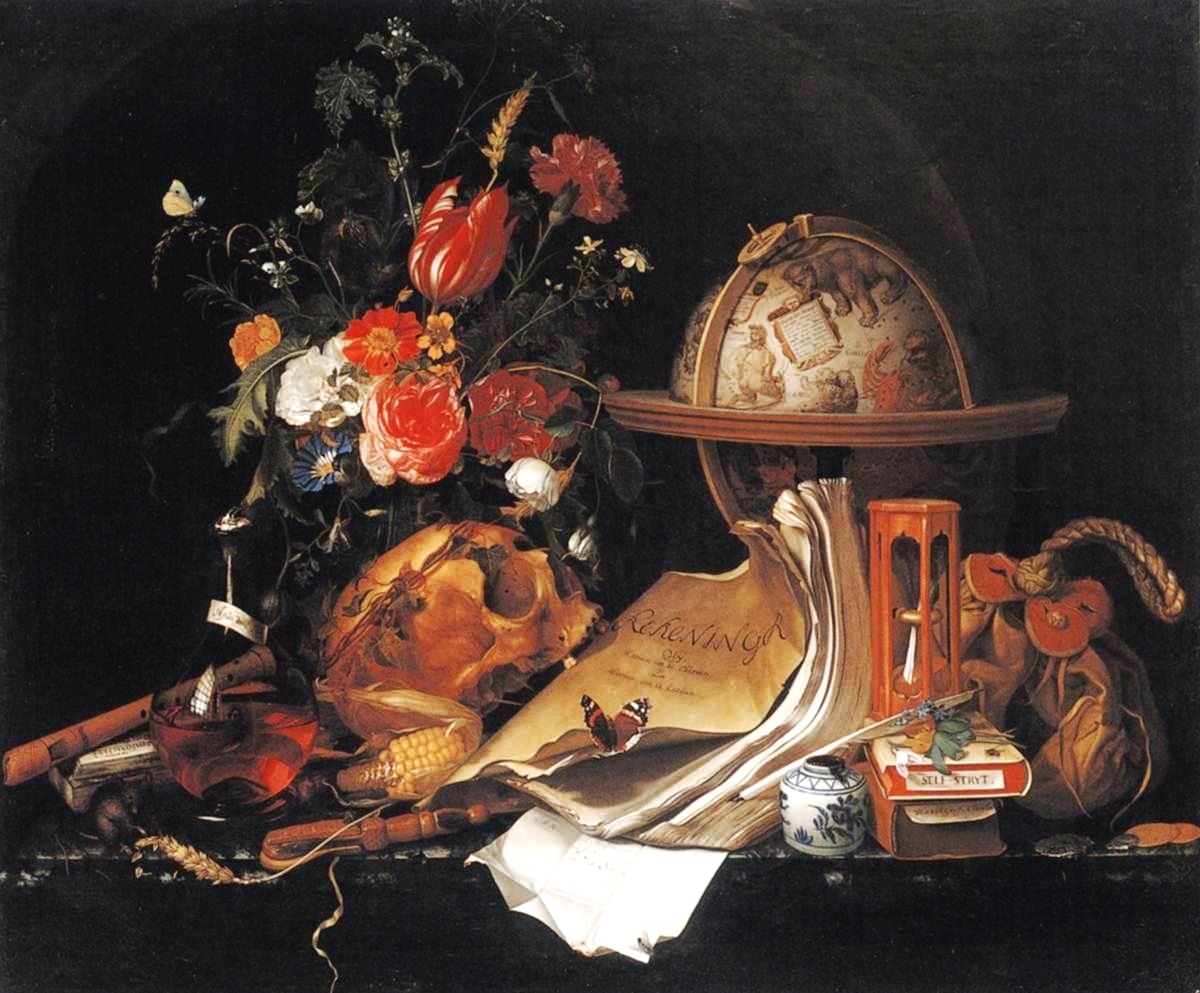 |
| David Bailly, 1651 |
Have you ever gone to a fine art museum and wondered, "What's with all those skulls?"
Did people decorate their houses with skulls?
Was it a weird funeral tradition in the 1600s?
Was it the beginning of the "goth" movement before Nine Inch Nails hit the scene?
Maybe you're more sophisticated than me or have a degree in art history, but I just figured it out last night.
This skull art is called "Vanitas" and gets pretty deep...
 |
Oosterwijck, 1668 |
In "Status Anxiety," Alain de Botton analyzes why modern people desire to "climb the social ladder" and the resulting anxiety which occurs. He believes its a side-effect of any democratic society where "everyone has the same opportunities to be successful." If one does not achieve success, its his or her fault, not the system.
While analyzing solutions to "status anxiety," Alain discusses the importance of thinking through your own death and evaluating your real priorities.
"Remembering that I'll be dead soon is the most important tool I've ever encountered to help me make the big choices in life. Because almost everything — all external expectations, all pride, all fear of embarrassment or failure - these things just fall away in the face of death, leaving only what is truly important. Remembering that you are going to die is the best way I know to avoid the trap of thinking you have something to lose. You are already naked. There is no reason not to follow your heart." - Steve Jobs
Vanitas art was a way to remind people of their imminent death.
"Examples of "vanitas art," so named in tribute to Ecclesiastes, were hung in domestic environments, most often studies and bedrooms. Each still-life featured a table or sideboard on which was arranged a contrasting muddle of objects. There might be flowers, coins, a guitar or a mandolin, chess pieces, a book of verse, a laurel wreath or a wine bottle; symbols of frivolity and temporal glory. And somewhere among these would be set the two great symbols of death and the brevity of life: a skull and an hourglass. The purpose of such works was not to send their viewers into a depression over the vanity of all things; rather it was to embolden them to find fault with particular aspects of their own experience, while at the same time attending more closely to the virtues of love, goodness, sincerity, humility and kindness" - Status Anxiety
It's a beautiful reminder. Here's some modern day examples.
 |
| Tonky Designs |
| Style Cupid |


Hello! I would like to know the artist for the last photograph, captioned "Style Cupid". I am a senior year undergraduate student of Honours in English studies, and I am doing my term paper on Vanitas Art. I would very much like to use this photograph as an example for contemporary Vanitas! Please help me out. You can also write to me on - nandita.krishna94@gmail.com. Thank you! - Nandita Krishna, Bangalore, India
ReplyDelete